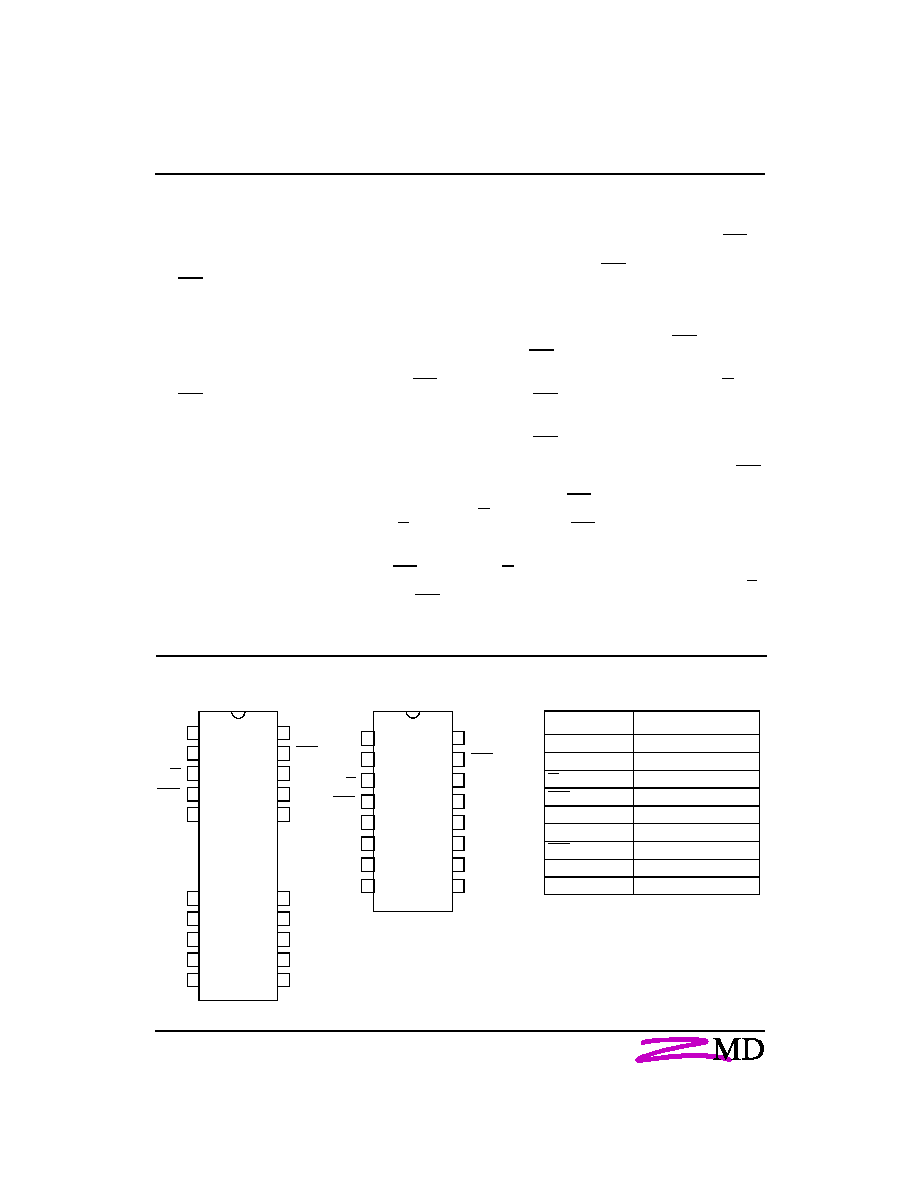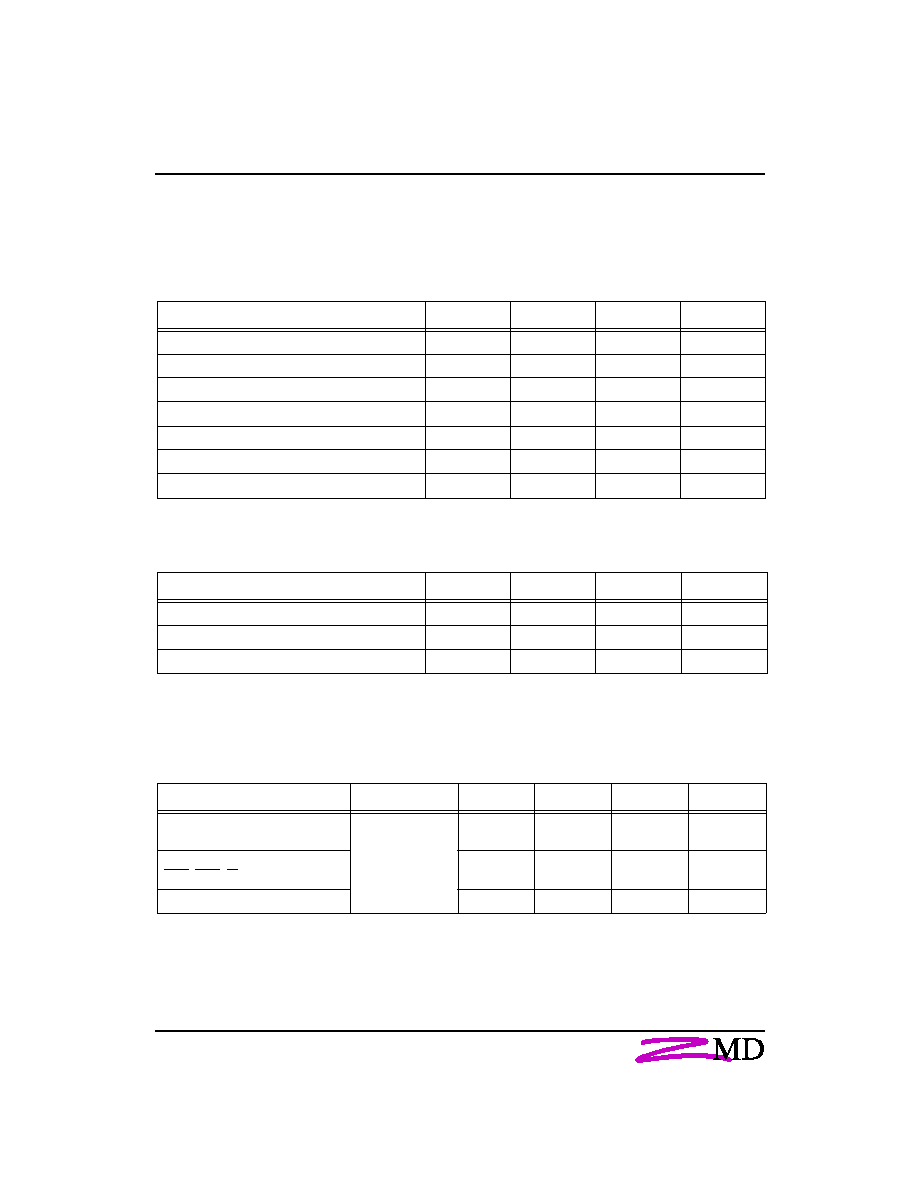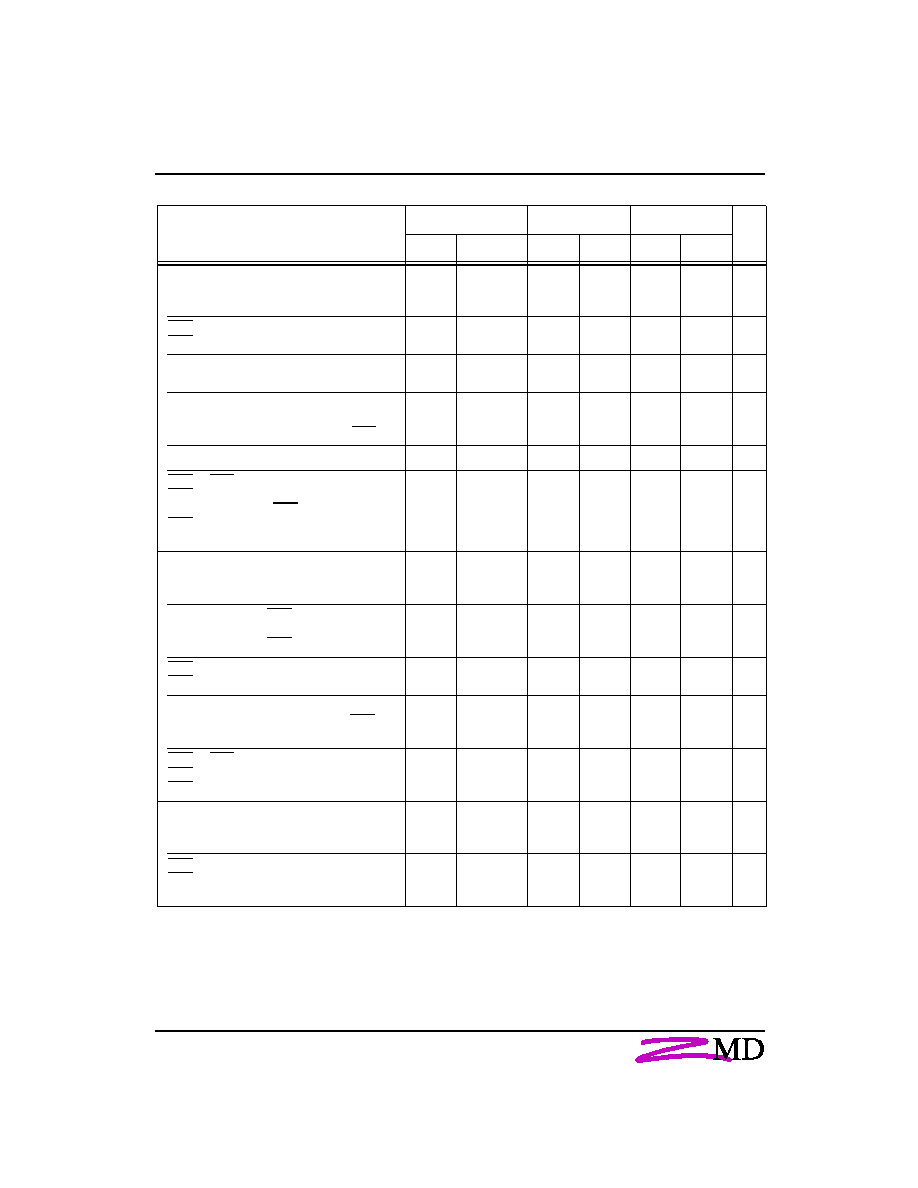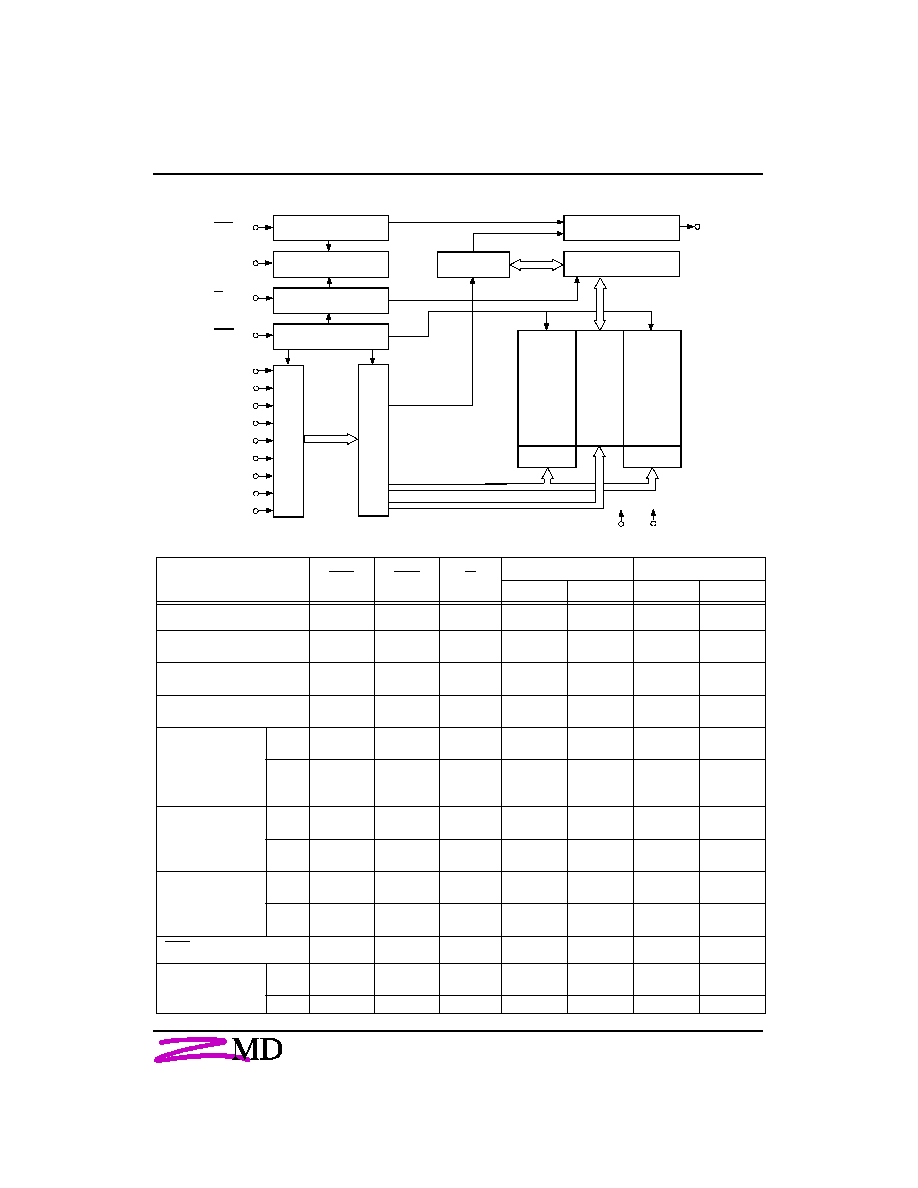
December 12, 1997
Maintenance only UD61256
1
Features
F
Dynamic random access memory
262144 x 1 bit manufactured
using a CMOS technology
F
RAS access times 70 ns, 80 ns
F
TTL-compatible
F
Three-state output
F
256 refresh cycles
4 ms refresh cycle time
F
FAST PAGE MODE
F
Operating modes: Read, Write,
Read - Write,
RAS only Refresh,
Hidden Refresh with address
transfer
F
Power Supply Voltage 5 V
F
Packages
PDIP16 (300 mil)
SOJ20/26 (300 mil)
F
Operating temperature range
0 to 70 �C
F
Quality assessment according to
CECC 90000, CECC 90100 and
CECC 90112
Description
Addressing
The UD61256 is a dynamic Write-
Read-memory with random access.
FPM facilitates faster data operation
with predefined row address. Via 9
address inputs the 18 address bits
are transmitted into the internal
address memories in a time-multi-
plex operation. The falling RAS-
edge takes over the row address.
During RAS Low, the column
address together with the CAS
signal are taken over. The selection
of one or more memory circuits can
be made by activation of the RAS
input.
Read-Write-Control
The choice between Read or Write
cycle is made at the W input. HIGH
at the W input causes a Read cycle,
meanwhile LO W leads to a Write
cycle.
Both CAS-controlled and W-control-
led Write cycles are possible with
activated RAS signal.
Data Output Control
The usual state of the data output is
the High-Z state. Whenever CAS is
inactive (HIGH), Q will float (High-Z).
Thus, CAS functions as data output
control.
After access time, in case of a Read
cycle, the output is activated, and it
contains the logic ,,0" or ,,1".
Q is then valid until CAS returns into
to inactive state (HIGH).
The memory cycle being a Read,
Read-Write or a Write cycle (W-con-
trolled), Q changes from High-Z
state to the active state (,,0" or ,,1").
After the access time the contents of
the selected cell is available, except
for the Write cycle.
The output remains active until CAS
becomes inactive, irrespective of
RAS becoming inactive or not. The
memory cycle being a Write cycle
(CAS-controlled), the data output
keeps its High-Z state throughout
the whole cycle. This configuration
makes Q fully controllable by the
user merely through the timing of W.
The output storaging the data, they
remain valid from the end of access
time until the start of another cycle.
Pin Configuration
1
A8
VSS
16
2
D
CAS
15
4
RAS
A6
13
5
A0
A3
12
3
Q
14
6
A2
A4
11
7
A1
A5
10
8
VCC
A7
9
W
1
A8
V
26
2
D
CAS
25
4
RAS
A6
23
10
A0
A3
17
3
Q
24
11
A2
A4
16
12
A1
A5
15
13
VCC
A7
14
W
5
n.c.
n.c.
22
9
n.c.
n.c.
18
Pin Description
Signal Name Signal Description
A0 - A8 Address Inputs
D Data Input
W
Read, Write Control
RAS
Row Address Strobe
UCC Power Supply Voltage
USS Ground
CAS
Column Address Strobe
Q Data Output
n.c. no connected
Top View
Top View
256K x 1 DRAM
SOJ
PDIP

December 12, 1997
UD61256
3
Characteristics
All voltages are referenced to V
SS
= 0 V (ground).
All characteristics are valid in the power supply voltage range and operating temperature range indicated below.
Absolute Maximum Ratings
Symbol
Min.
Max.
Unit
Power Supply Voltage
V
CC
-0.5
7.0
V
Input Voltage
1)
V
I
-1.0
7.0
V
Output Voltage
1)
V
O
-1.0
7.0
V
Output Current
I
O
-50
50
mA
Power Dissipation
P
D
1
W
Operating Temperature
T
a
0
70
�
C
Storage Temperature
T
stg
-55
125
�
C
Remarks: see page 7
Recommended Operating Conditions
Symbol
Min.
Max.
Unit
Power Supply Voltage
V
CC
4.5
5.5
V
Input Low Voltage
1)
V
IL
-1.0
0.8
V
Input High Voltage
V
IH
2.4
5.5
V
Remark: see page 7
Capacitances
Conditions
Symbol
Min.
Max.
Unit
Input Capacitance
A0 to A8, D
V
CC
= 5.0 V
V
I
=
V
SS
f
= 1 MHz
T
a
=
25
�
C
C
I1
6
pF
Input Capacitance
RAS, CAS, W
C
I2
7
pF
Output Capacitance
C
O
7
pF
All pins not under test must be connected with ground by capacitors.

December 12, 1997
UD61256
4
Static Characteristics
Conditions
Symbol
Min.
Max.
Unit
07
08
07
08
Power Supply Current
(average value of RAS-CAS cycles)
2)
t
cW
= t
cWmin
t
cR
= t
cRmin
I
CC1
70
60
mA
Refresh Current
(average value of RAS cycles)
2)
t
cW
= t
cWmin
t
cR
= t
cRmin
CAS = V
IH
I
CC2
70
60
mA
FPM Current
(average value of FPM cycles)
2)
t
cPG
= t
cPGmin
RAS = V
IL
I
CC3
50
40
mA
Stand-by Current (TTL Level)
RAS = CAS
= V
IH
I
CC4
2
2
mA
Stand-by Current (CMOS Level)
RAS = CAS
= V
CC
- 0.2 V
I
CC5
1
1
mA
Output High Voltage
I
OH
= -5 mA
V
OH
2.4
2.4
V
Output Low Voltage
I
OL
= 4.2 mA
V
OL
0.4
0.4
V
Input Leakage Current
at any input,
all other pins = 0 V
V
I
= 0 V to
5.5 V
I
I
-10
-10
10
10
�
A
Output Leakage Current
Q = High-Z
V
O
= 0 V to
5.5 V
RAS = CAS
= V
IH
I
O
-10
-10
10
10
�
A
Remarks: see page 7

December 12, 1997
UD61256
5
Dynamic Characteristics
3)
Symbol
Min.
Max.
Unit
Alt.
IEC
07
08
07
08
F
ALL CYCLES
Transition Time (Rise and Fall)
4)
t
T
t
t
3
3
50
50
ns
RAS Precharge Time
CAS Precharge Time
t
RP
t
CP
t
w(RASH)
t
w(CASH)
50
10
60
10
ns
ns
Row Address Set-up Time
Column Address Set-up Time
t
ASR
t
ASC
t
su(RA-RAS)
t
su(CA-CAS)
0
0
0
0
ns
ns
Row Address Hold Time
Column Address Hold Time
Column Address Hold Time ref. to RAS
t
RAH
t
CAH
t
AR
t
h(RAS-RA)
t
h(CAS-CA)
t
h(RAS-CA)
10
15
55
10
15
60
ns
ns
ns
Output Buffer Turn-off Delay
5)
t
OFF
t
v(CAS)
0
0
20
20
ns
CAS to RAS Precharge Time
RAS to Column Address Delay Time
Column Address to RAS Lead Time
CAS to Output in Low-Z
Refresh Period
6)
t
CRP
t
RAD
t
RAL
t
CLZ
t
REF
t
CASH-RASL
t
RAS-CA
t
CA-RASH
t
CASL-QX
t
rf
5
15
35
0
5
15
40
0
35
4
40
4
ns
ns
ns
ns
ms
F
READ
Random Read Cycle Time
12)
t
RC
t
cR
130
150
ns
Access Time from RAS
Access Time from Column Address
Access Time from CAS
8)
8)
8)
t
RAC
t
AA
t
CAC
t
a(RAS)
t
a(CA)
t
a(CAS)
70
35
20
80
40
20
ns
ns
ns
RAS Pulse Width
CAS Pulse Width
t
RAS
t
CAS
t
w(RASL)
t
w(CASL)
70
20
80
20
10000
10000
10000
10000
ns
ns
Read Command Set-up Time
Read Command Hold Time ref. to RAS
Read Command Hold Time
9)
9)
t
RCS
t
RRH
t
RCH
t
su(R-CAS)
t
h(RAS-R)
t
h(CAS-R)
0
0
0
0
0
0
ns
ns
ns
RAS to CAS Delay Time
CAS Hold Time
RAS Hold Time
6)
t
RCD
t
CSH
t
RSH
t
RASL-CASL
t
RASL-CASH
t
CASL-RASH
20
70
20
20
80
20
50
60
ns
ns
ns
F
WRITE
Random Write Cycle Time
12)
t
RC
t
cW
130
150
ns
RAS Pulse Width
CAS Pulse Width
Write Command Pulse Width
t
RAS
t
CAS
t
WP
t
w(RASL)
t
w(CASL)
t
w(W)
70
20
15
80
20
15
10000
10000
10000
10000
ns
ns
ns
Remarks: see page 7
7),
7),
7),




